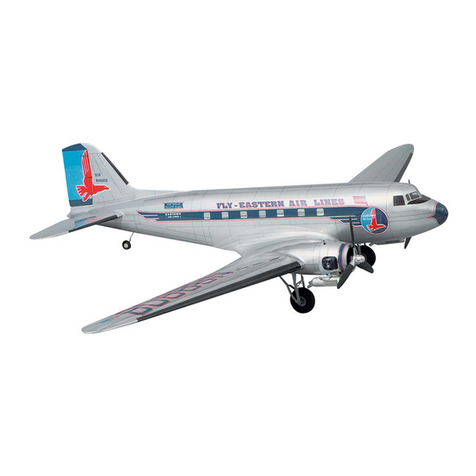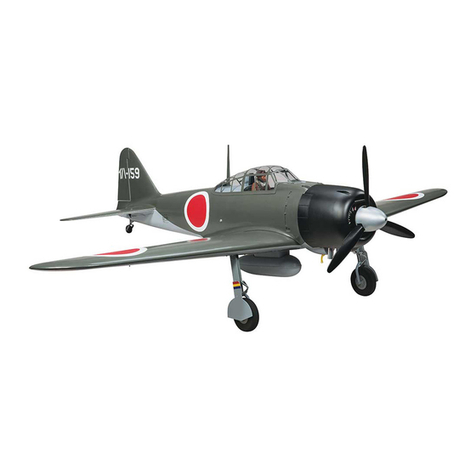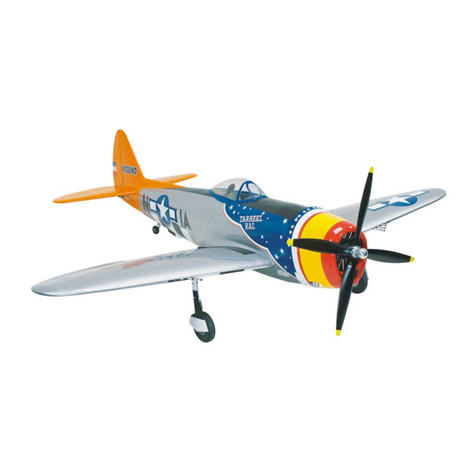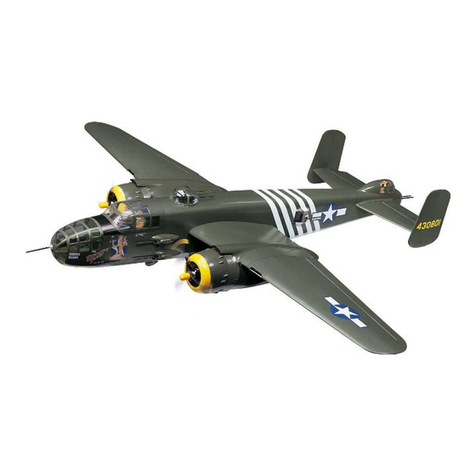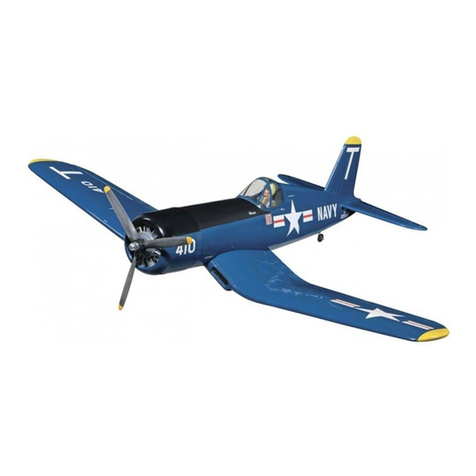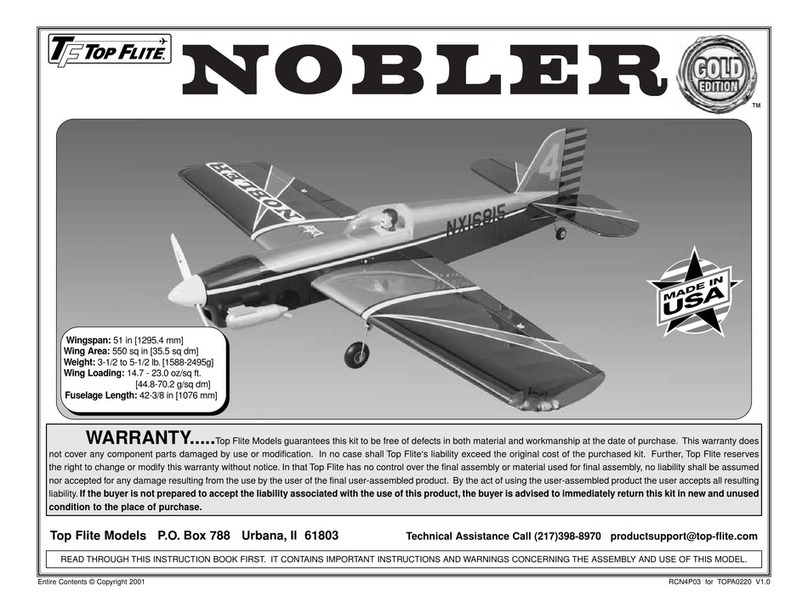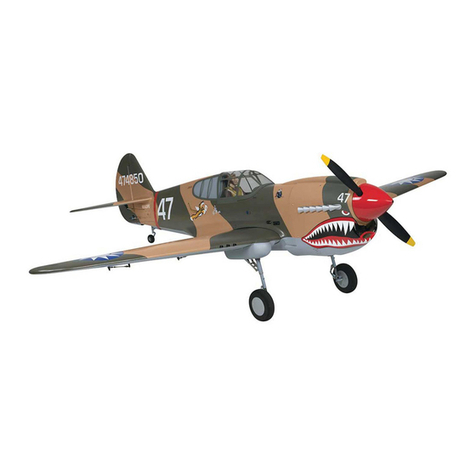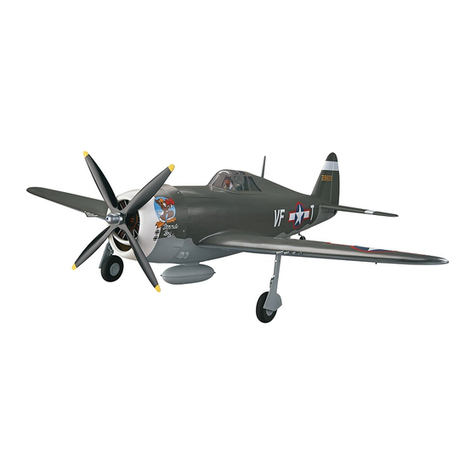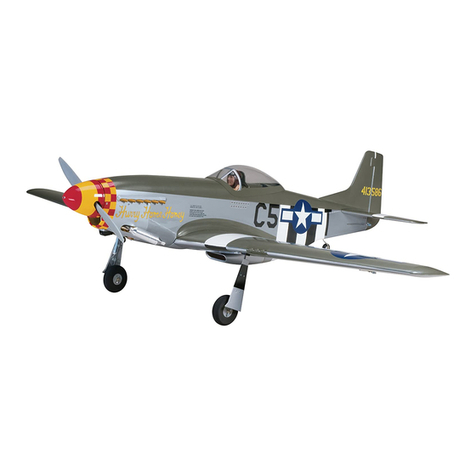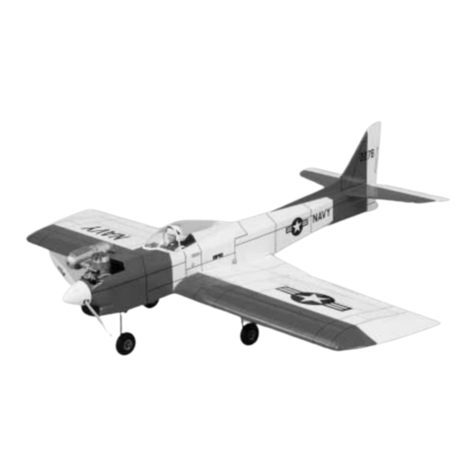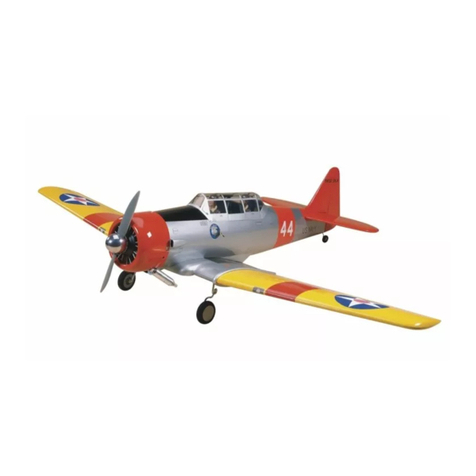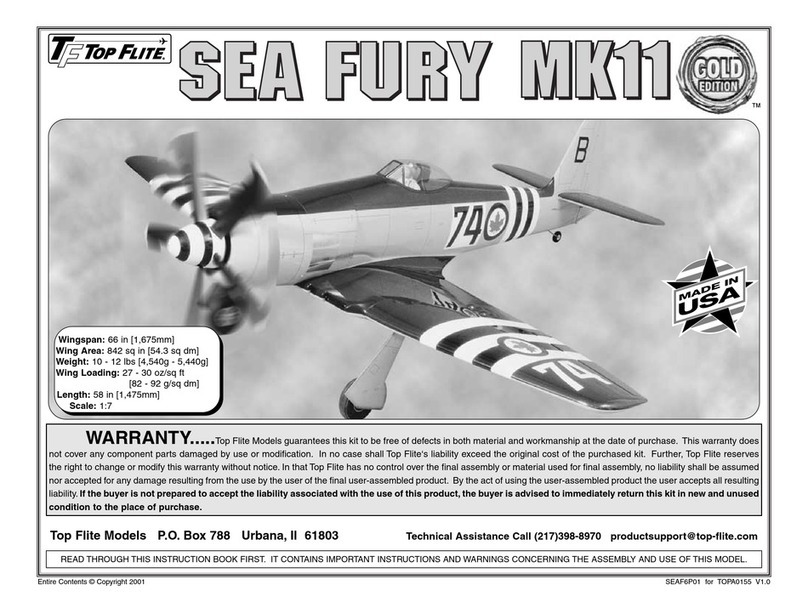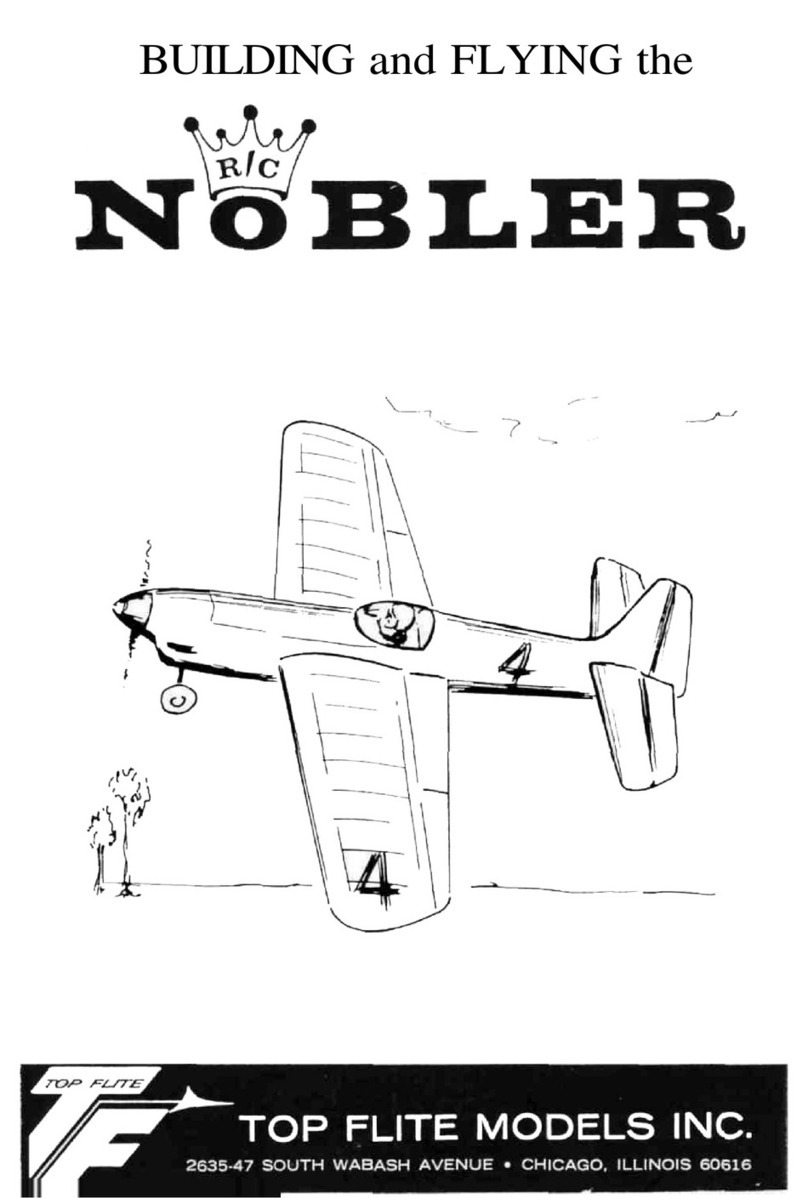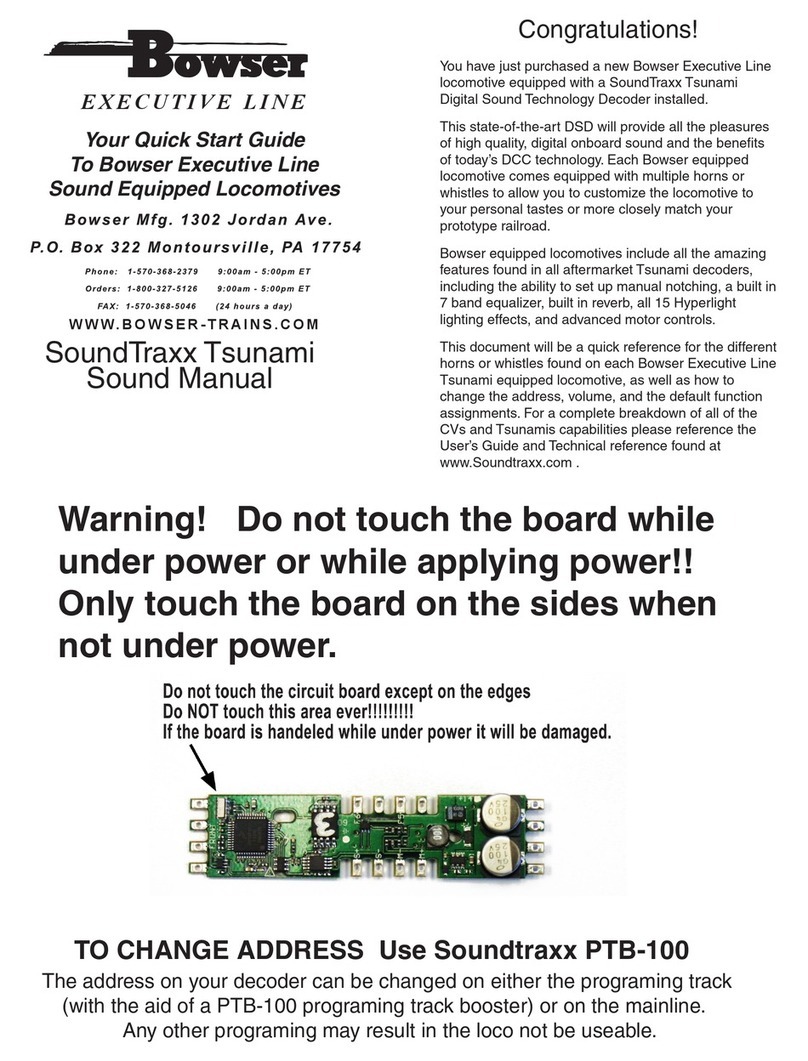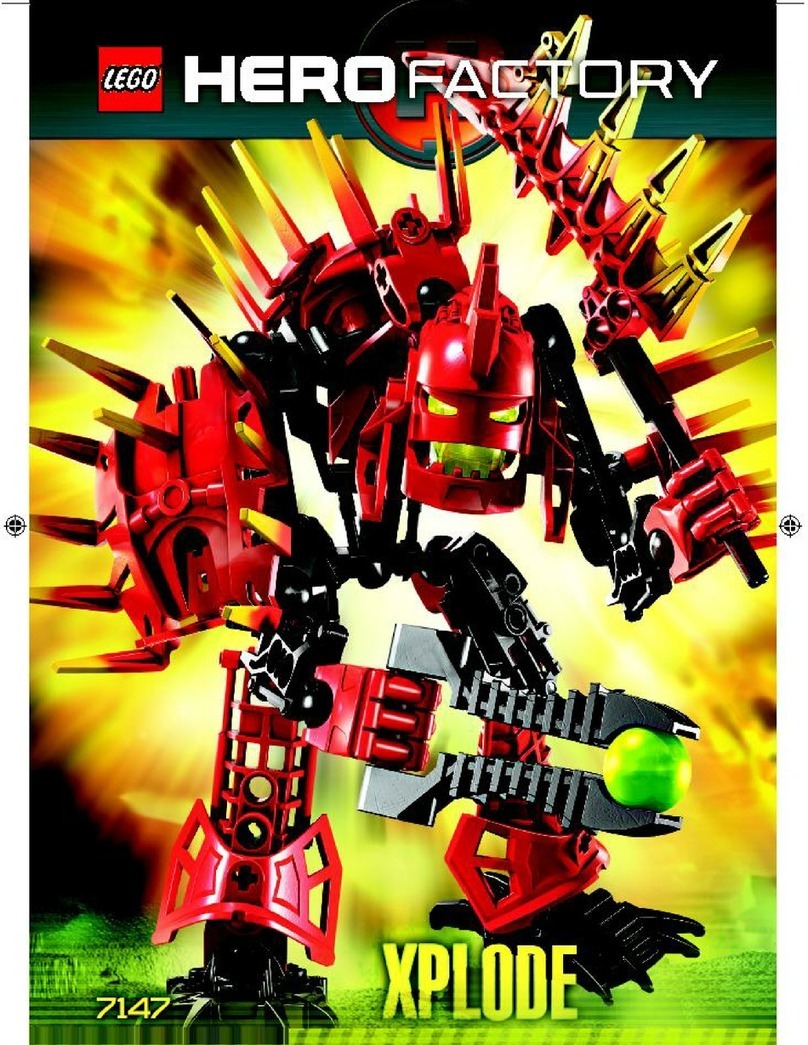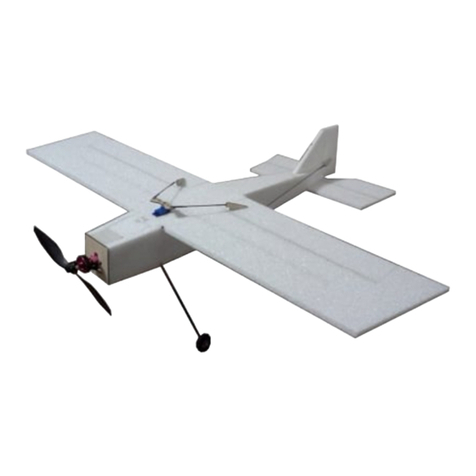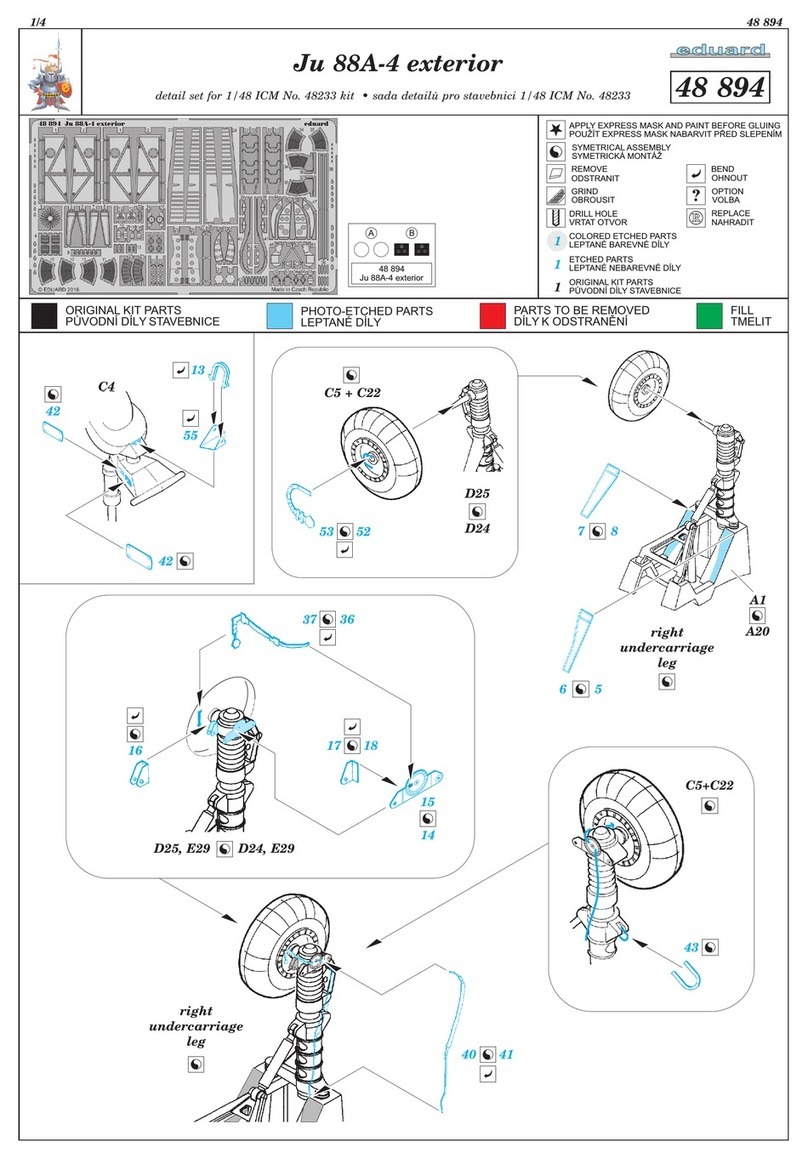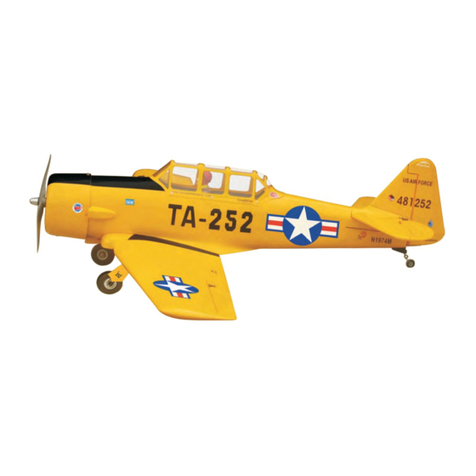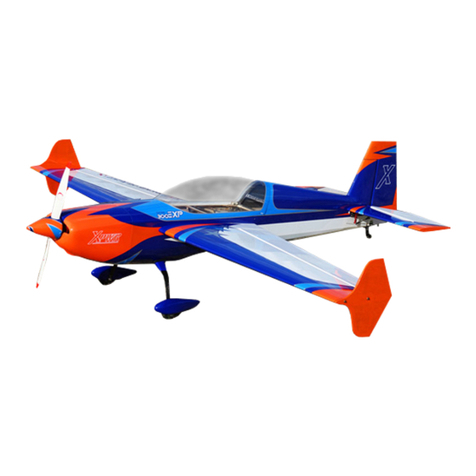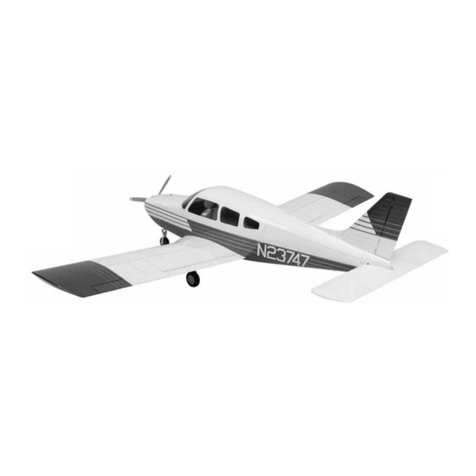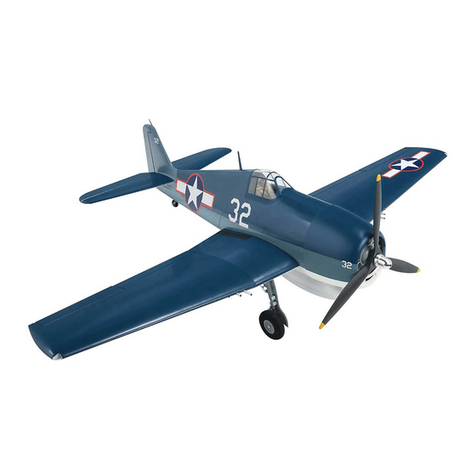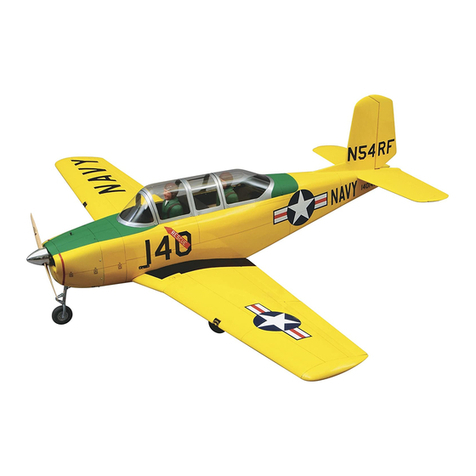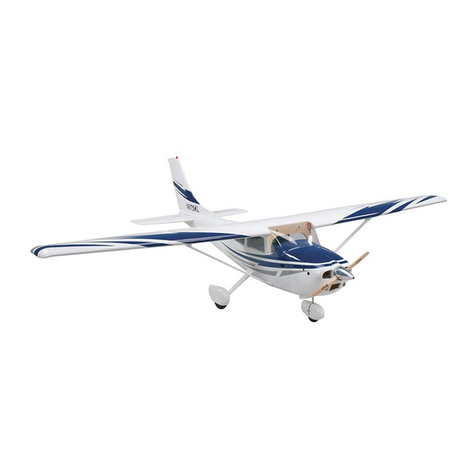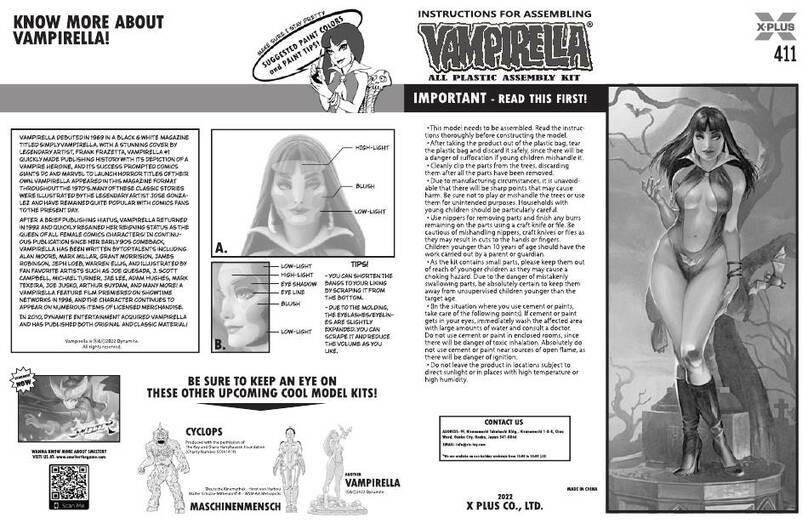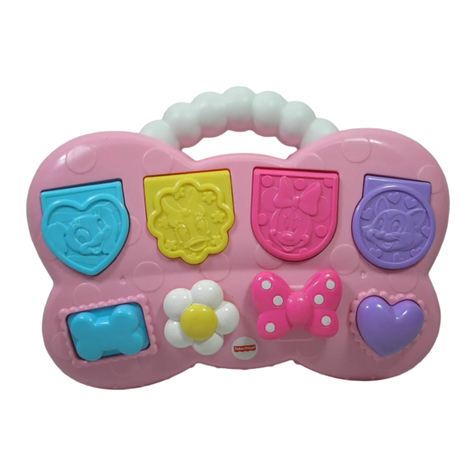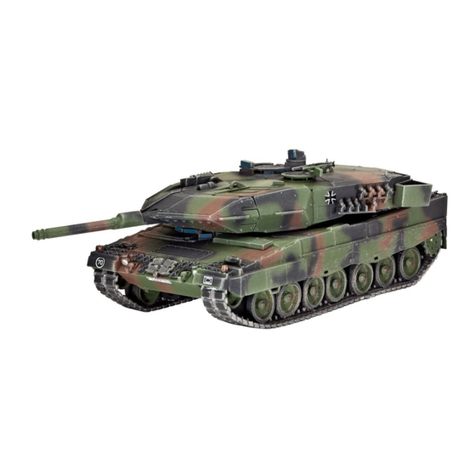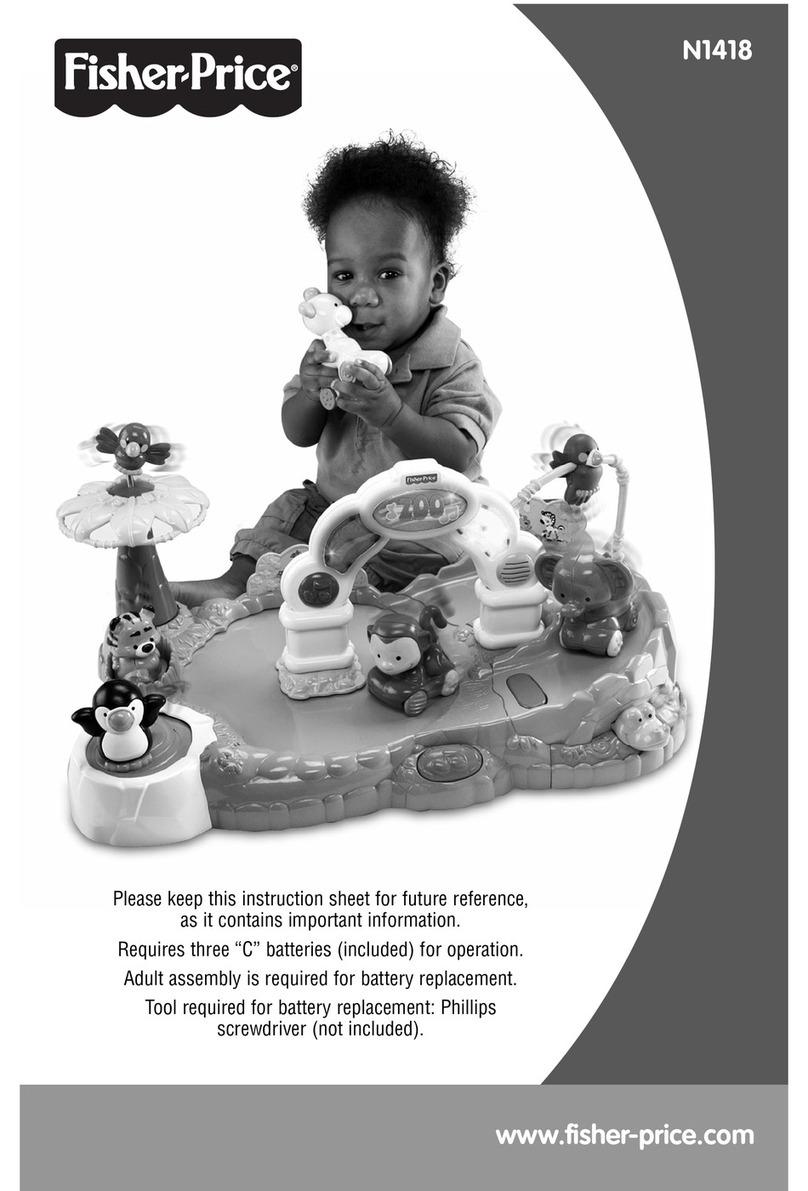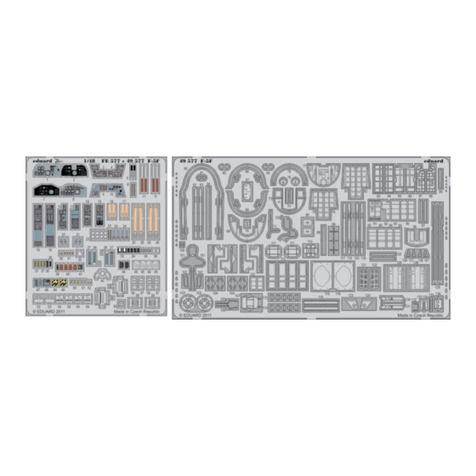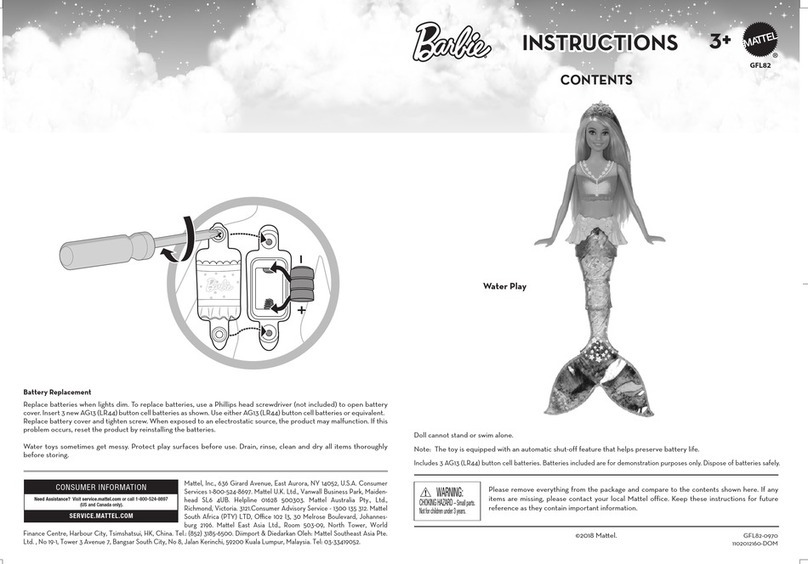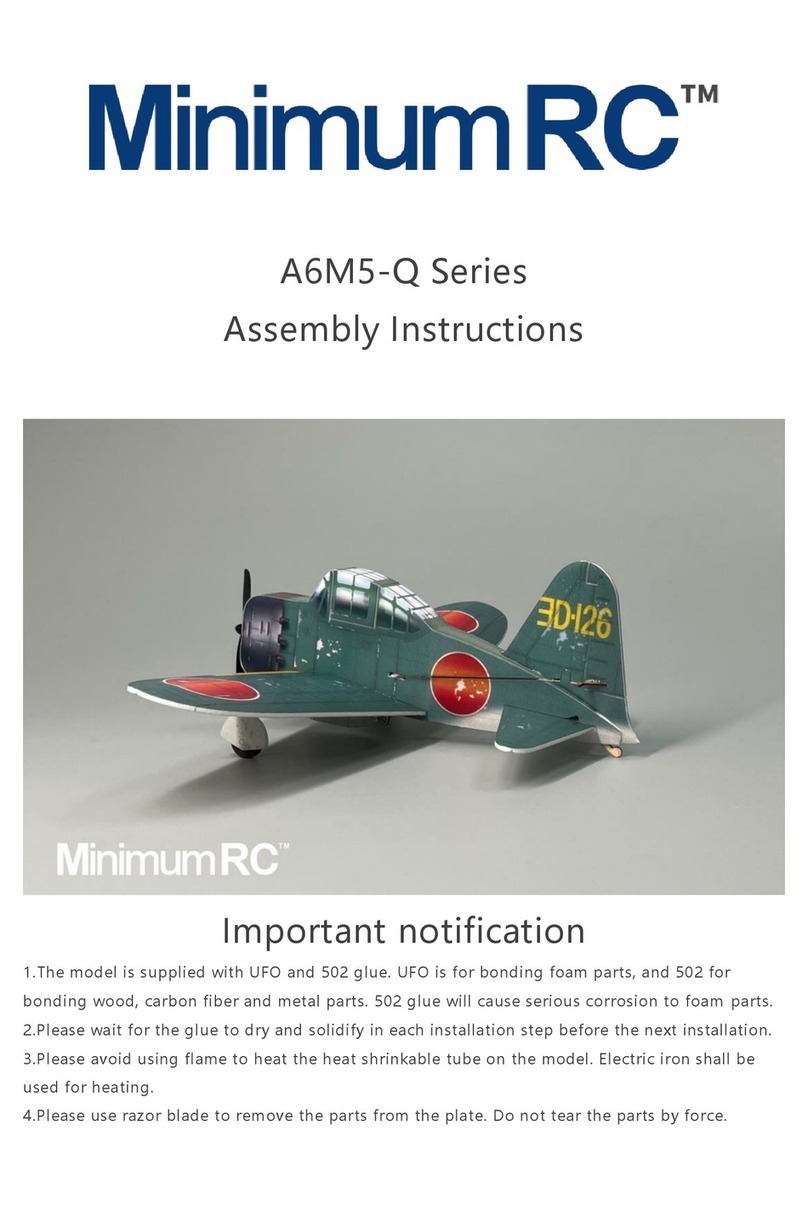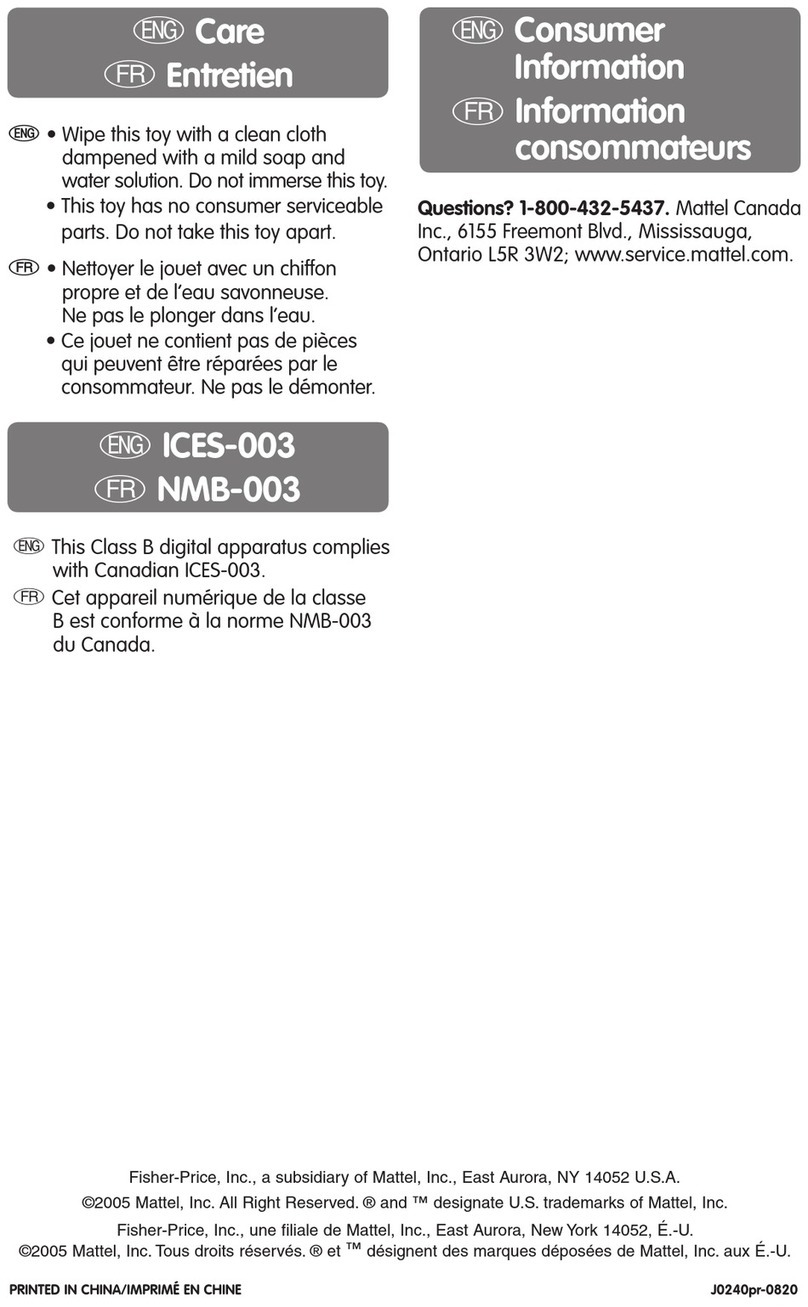with red,whiteandblueRoundelsandtailtreatment)to
aGerman WWI fighter(all red Monokote withblack Iron
Cross's on a whitebackground) to civilian-type versions
(dove gray fuselages, transparent blue wings and tail-
group and chrome Monokote "cowls!") Interestingly, no
matter what color scheme we used, there was always a
group of people at the flyingsite who would stand there
looking at the Elder,arguing about what real, full-scale
aircraftitrepresented. Just remember that the Elderis
notascale model, you'refreetocoveritinanyconfigura-
tion that strikes your fancy—itwilllook great!
Before covering, itissuggested that the finalfinishbe
applied to the open spruce fuselage structure.This can
bedone several ways. There isa very good product on
the market called Varathane that issold through most
well-stocked hardware and lumber supply outlets. This
material is essentially clear and willleave the spruce
about its same color, maybe a littledarker, and
somewhat shiney. Itisresistant to spent fueland quite
durable inactual use. Epoxy paint, mixed to achieve a
woodish brown colorand brushed orsprayed alsoworks
well. Takeyourtime here, use light sandpaper togo over
the framework, smoothing itfor the finishof your
choice. When applying the finish,besure that all of the
exposed wood, except the top, rear stab glueing area,
receives paint. We then used flatblack paint (again,
epoxy is great) to paint each of the ply "joint-caps", this
really makes the structurecome to life!
Now forthe covering itself.Use the directions that are
supplied witheach roll of Monokote and cover each of
the various components separately; fuselage, wing,
stab,elevators,finand rudder.Someofyoumighthavea
problem withthe wingtipsof theElder,if thisisyour first
venture into the use of Monokote or your firstR/C
airplane.Wetriedamethodon oneofourprototypesthat
worked quite wellforthese tips.First, cover the wing
panels totally,starting withthe bottoms first,including
'the wingtips.Then coverthetops of the wingpanels out
to and including the last outboard W-2 wing rib, but not
the wingtipsthemselves. Next, cut an elongated
triangular piece of Monokote to fitover the space bet-
ween theforward W-2 rib and the forwardW-9 wingtip
former—keepthe edges straight,allow about 1/8"
overlap and iron thispiece inplace. Move now to the
nextexposedtriangularareabetweenW-9andW-10and
repeat theprocess. This method willprovide a much
easier covering situation forthe newcomer and, if done
carefully,givesyou anice looking, wrinkle-freewingtip.
When coveringthe fuselage besure that thebottom
covering—thepiece that you should apply
first—overlapsinto and on the firewallby about 1/4" at
least. Additional informationon how to use Monokote is
now available on video tape. See your dealer orwriteto
Top Flite.
Assumingthatthe airplane is now covered, turnyourat-
tention to fuel-proofingthe engine compartment. We
like to use and highly recommend a liberal coat of
polyesterresin. This material should beappliedtoallex-
posed wood inthe inside ofthe cowlarea and over all of
the Monokote seams that terminatein thecowlitself.
This seals the wood as well as the Monokote seams and
avoids"fuelcreep"lateron.Besuretokeeptheresinout
of the bolt holes inthe firewall.
Use your X-actoknifeto now clear-out all of the hinge
slots in the tailgroup. Dothe same thingforthe wing
hold-down bolt holes, the cockpit, the landinggear
screw holes, etc.
Mount the wing to the fuselage withthe nylon bolts.
Place the stab inposition on thetop rear of the fuselage
and sight down the frontof themodel to observe ifthe
stab issittingflatin relationshiptothewing,withoutany
tilt.Once satisfied,hold thestab firmlyinplace in the
position that itis meant to be;square withthe fuselage
and aligned correctlywiththe wingwhen viewed from
the top—makesure that it is exactlywhere you want it.
Use a sharp pencil and, whileholding the stab inplace,
tracethe outline of theframeworkthat isincontact with
the bottom of the stab onto the stab itself.Remove the
stab fromthefuselage.Use your X-actoknifeto now
lightly cut-out the frameoutlinefromthe bottom of the
stab's Monokote to expose the wood—thiswillbeyour
glueing surface. The stab can now bemounted to the
fuselage; we used a "thick" CAadhesive forthis.
Next,prepare the finformounting tothe stab by making
sure that all covering isremoved fromthe bottom of it,
leaving exposed wood. Hold the fininplace on the stab
inthe position that itissupposed tobe;dead-centerwith
the fuselage centerline.Use the same pencil and mark
the fin'slocation on the top of the stab. Remove the fin
and use your X-actoknifeto remove the coveringfrom
the previously marked location, exposing thewood.
Before glueing thefinto the stab, use a pin to make lots
of small holes inthe exposed wood of both the stab and
finbottom, these need not be deep. Use a slowerdrying
adhesive (Titebond, 1-hour epoxy, etc.) to now glue the
fininplaceon thestab. Usea lengthof lighttapeoverthe
top of the finand on each tipof the stab to hold the finin
place, at right angles, and allowtodry. Check periodical-
lywhilethisstructureisdrying to besure thatthefinhas
not shiftedand isinplace at right anglesto thestab and
on thecenterlineof the fuselage;we wanteverything
"square." When thisstructureis dry, remove the tape.
Threada lengthof20#fishingline(used forrigging thru-
out, if desired) through the hole at thetop of the finand
glue each end of the line into theholes at each tipof the
stab—carefullyapplied "thick"CA adhesive willwork
well.The finshould now bequiteimmobile on the stab.
Use1-hourepoxytonowgluethefourhingesrequiredin-
to the trailingedge of the stab and the twohinges re-
quired into thefin.Next, mount theelevatorsto their
hingesfollowedbytherudder,againusing 1-hourepoxy.
Alittleacetone or CA debonder on a cleanpaper towel
can beused to clean-offany glue that has oozed out of
the hinge slots.
Mount the landing gear assembly to the fuselage with
the screwsand clipsprovided. Mount the clips securely
butdo not over-tighten.
Install themotormount to thefirewallandyourengineto
the motormount.Wewouldsuggestthatyou mountyour
engineusing4-40Alien-headbolts intopre-tapped holes
inthe motor mount. Cut a couple of 10"-12"lengths of
10












